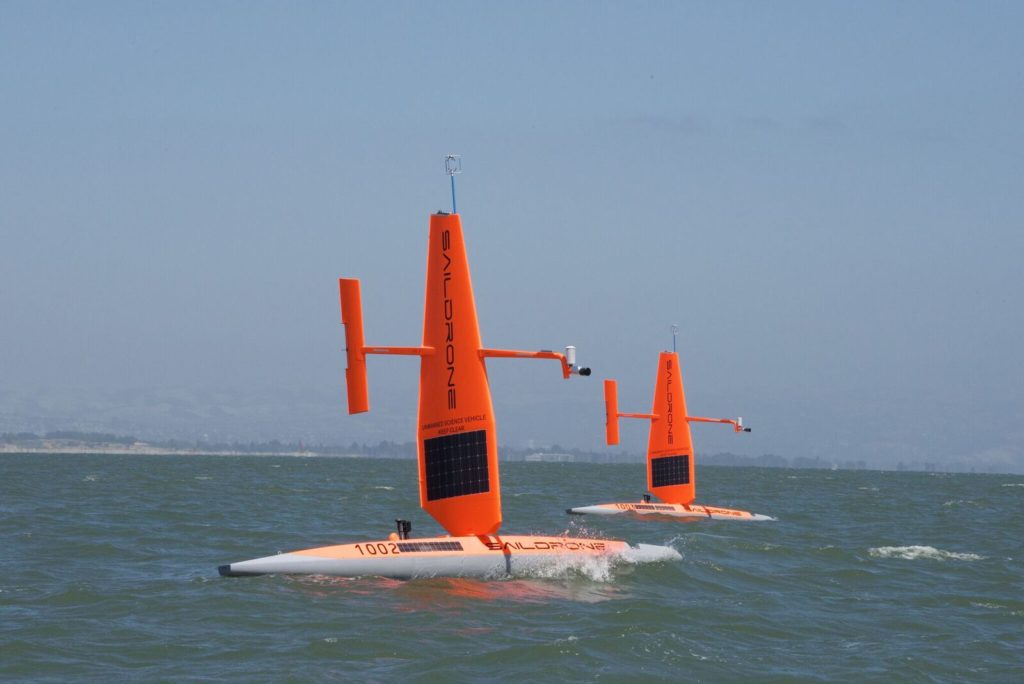
Nine years ago, engineer Richard Jenkins broke the world land speed record for a wind-powered vehicle with a sailboat on wheels driving across a dry lakebed at 126 miles per hour. After years of engineering development, his technology has now taken on the form of a saildrone that can autonomously sail the sea gathering ecologic, oceanic and atmospheric data.
The saildrones – built by Jenkins’ startup company Saildrone Inc. and developed in conjunction with NOAA’s Pacific Marine Environmental Laboratory– are powered by solar panels and propelled by the wind. They can sail for months at a time and cover thousands of miles while constantly relaying data via satellite to onshore operators.
The 20-foot tall drones can carry over 200 pounds of instruments. They are being used for diverse research projects. For example, they have followed fur seals as they hunt for food or zig-zag across oceanic eddies or fronts. They have carried out fish surveys and studied ocean-atmosphere interactions in the arctic with an endurance and range that are well beyond the capability of human researchers. They have been used to study the exchange of carbon dioxide in the tropical atmosphere and track the progress of El Niño in the Pacific.
After each mission, engineers have learned more about how to improve saildrones to make them more effective and durable. They need to be able to handle the extreme weather of the Bering Sea, resist the buildup of algae, and withstand abuse from curious marine animals.
The improving technology is now approaching the stage where outside agencies, institutions and universities can start using it to study the oceans of the world.
**********
Web Links
Adaptable and driven by renewable energy, saildrones voyage into remote waters
Photo courtesy of Saildrone, Inc.
‘Saildrones for Science’ from Earth Wise is a production of WAMC Northeast Public Radio.
Leave a Reply